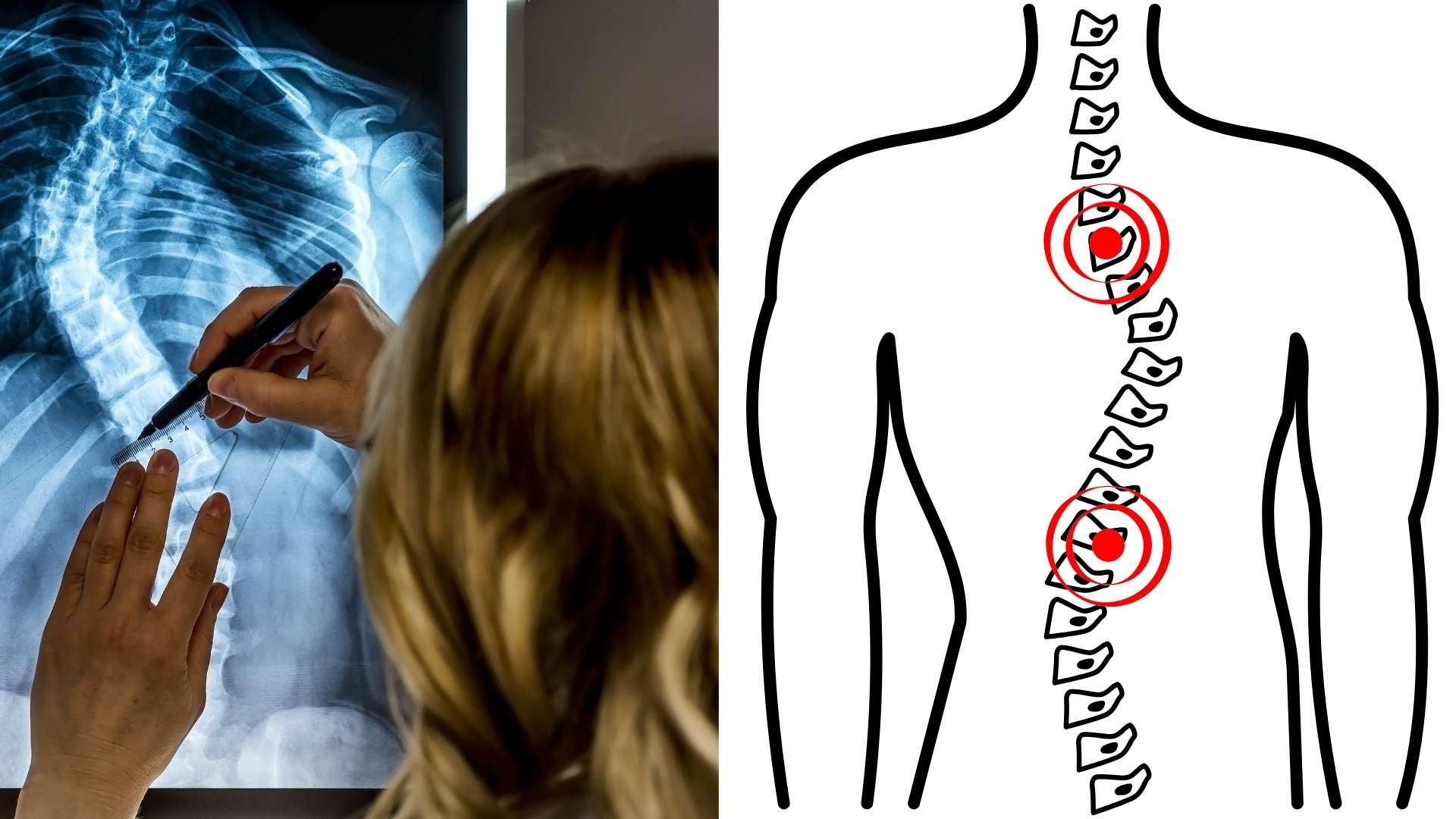Scoliosis is an abnormal C-shaped or S-shaped curve of the spine that usually occurs in children or early teens. It can also occur in older adults, usually in their 60s and 70s.

Normal vs. Abnormal Spinal Curvature
Your spine can be divided into three main sections: the neck (cervical spine), the chest and mid-back (thoracic spine), and the lower back (lumbar spine).
With scoliosis, the vertebrae curve to one side and rotate or twist, causing the hips or shoulders to appear uneven.
While scoliosis can occur in any part of the spine, the thoracic and lumbar spines are most commonly affected. A sideways or “C” shaped curvature of the thoracic or lumbar spine forms.
Symptoms of scoliosis
Here are some of the most common signs of scoliosis:
- Uneven shoulders, arms, chest and hips (meaning one side is higher than the other)
- One shoulder blade sticks out further than the other.
- Body clearly tilted to one side
- The head is not directly above the pelvis
Complications
If scoliosis progresses without treatment, the spinal deformity can press on nearby nerves, leading to weakness, numbness, and electric shock-like sensations in the legs.
If the lungs cannot expand due to chest deformity, breathing problems can occur.
Complications can also arise from treatment and vary depending on the type of scoliosis. For example, people with congenital scoliosis (present from birth) who are treated with spinal fusion surgery may be at higher risk of breathing problems from the procedure than people diagnosed with idiopathic scoliosis.
Older adults may experience pain and mobility issues as they age because their spinal cords are affected by age-related degenerative changes and neuromuscular conditions. Osteoporosis may also contribute to these cases of scoliosis.
Infections and other complications after scoliosis surgery are common in older adults, with nearly 80% of 92 participants in one study experiencing these complications.











